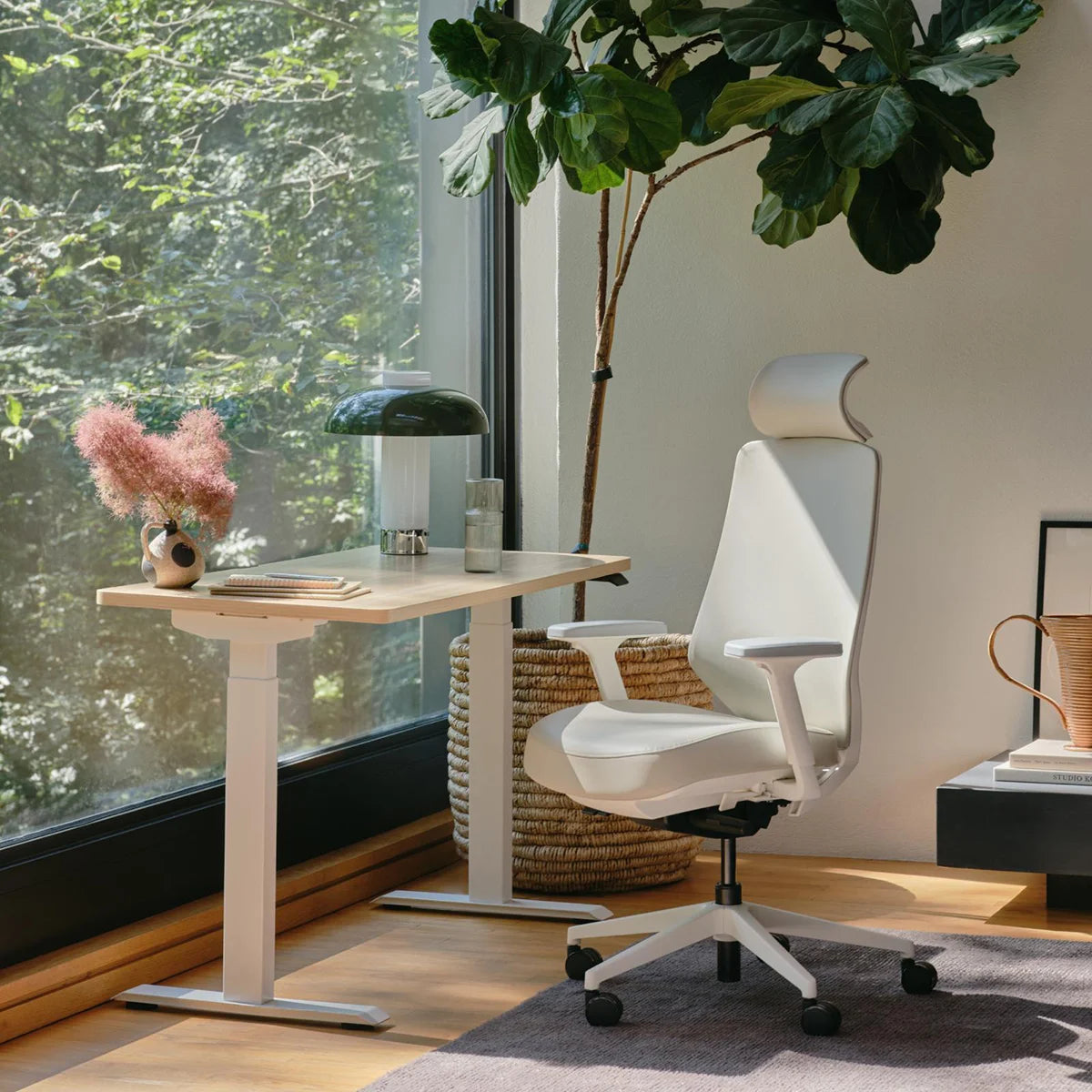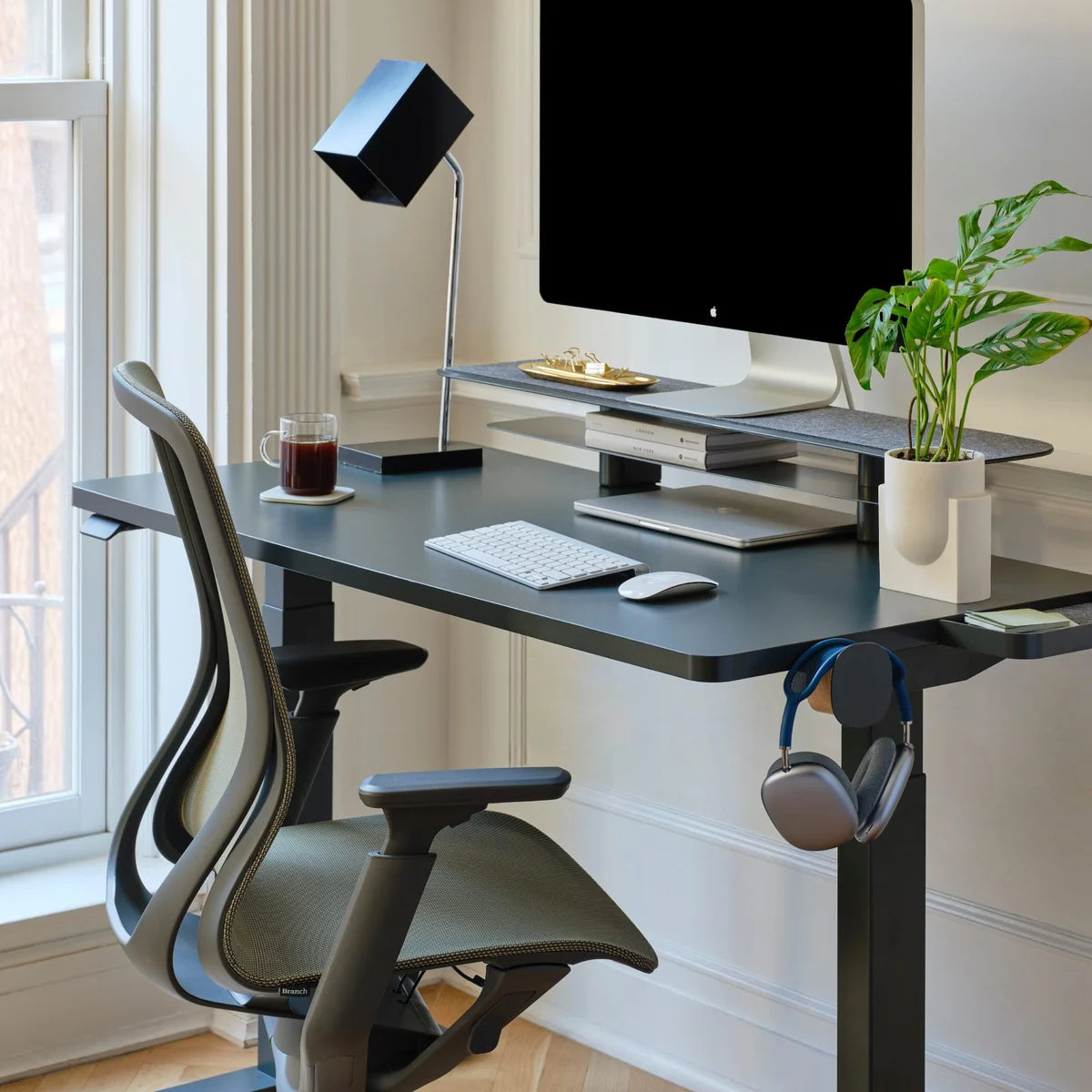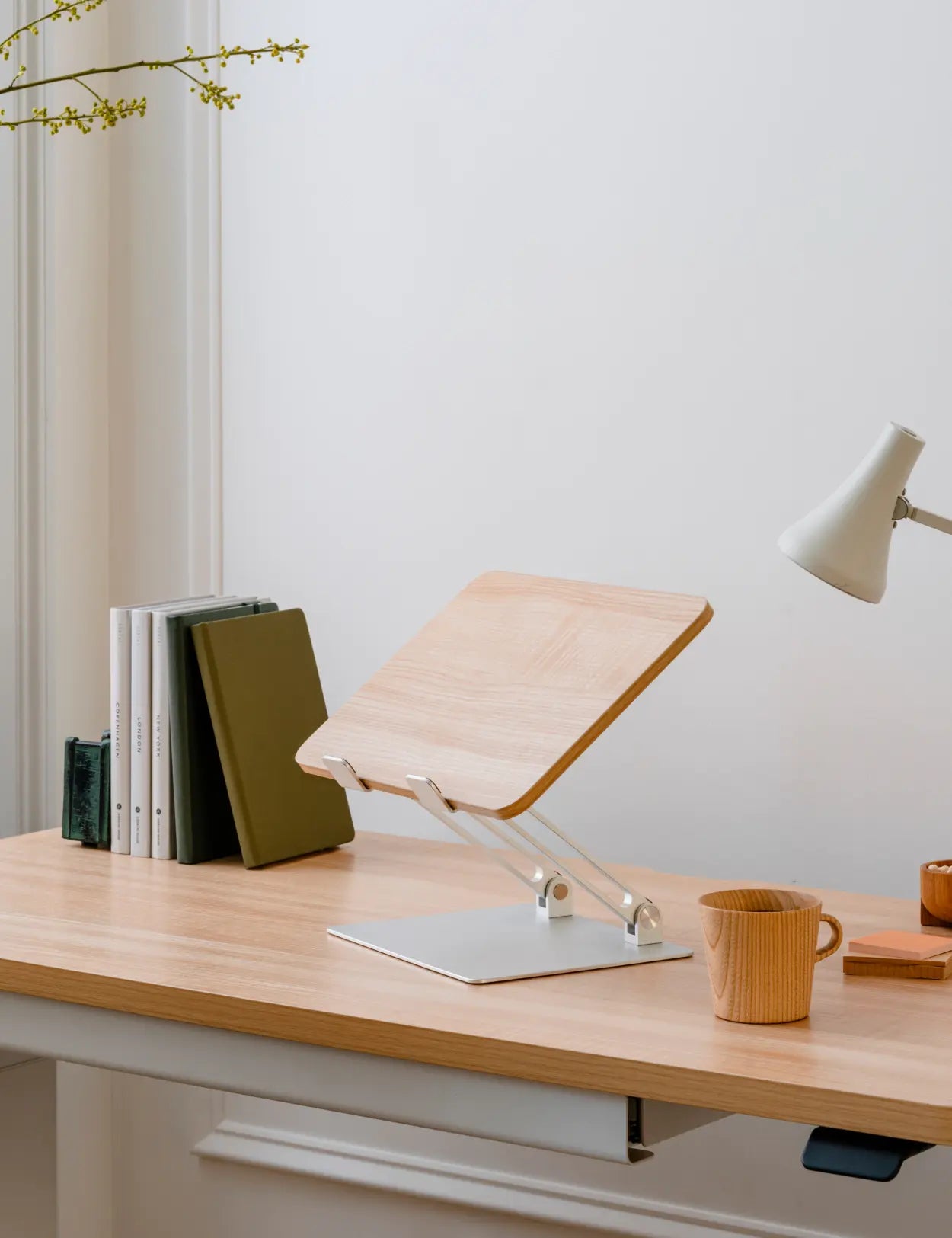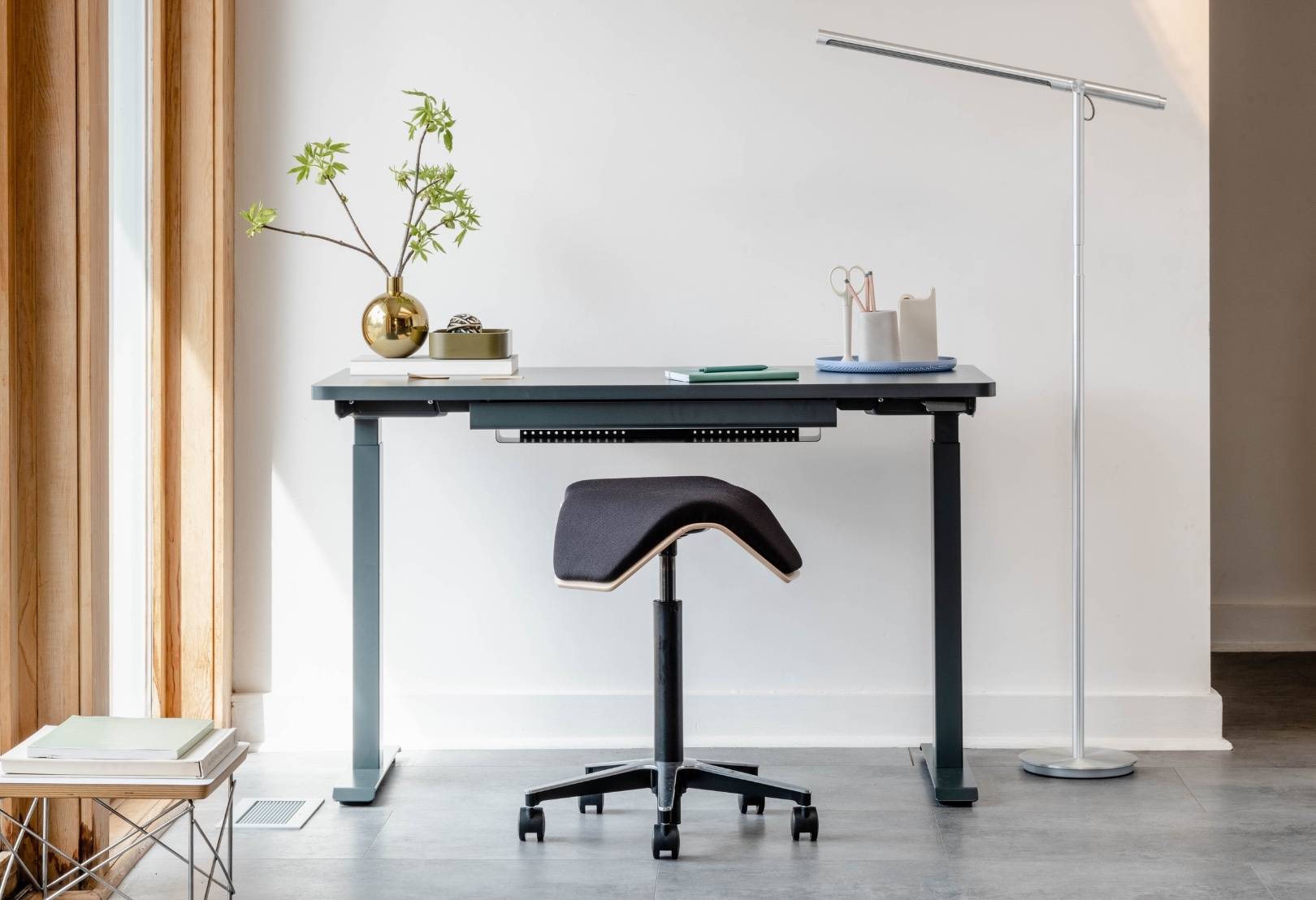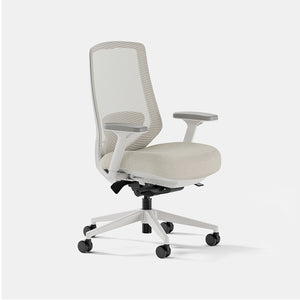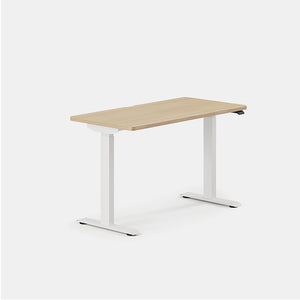The right furniture is the backbone of an ergonomicworkspace. Every element, from your desk to your chair, can play a significant role in how you feel and perform during your workday.
Let's talk about the two pivotal pieces of your workspace: the desk and the office chair.
For a start, consider desks. As a focal point of productivity, a desk needs to meet and exceed your work needs.
While a desk may first appear simple, adjustable height and a range of options in desk shape will help you stay more comfortable while placing what you need to see in eyesight and what you need to reach organized and close at hand.
Adjustable standing desks can help increase your blood flow and productivity by encouraging you to move between a seated and standing position. They also enable you to configure your computer monitor at eye level, reducing the strain on your neck and shoulders. Remember, the goal is to keep everything within easy reach and at the right height, promoting good posture and reducing the risk of back pain.
Now, let's turn our attention to performance office chairs. The right Ergonomic Chair can do wonders for your lower back and overall comfort. Features like lumbar support, armrests, backrest, and an adjustable chair height can help maintain your body in a neutral position. Armrests and backrests support your upper body, reducing the strain on your shoulders and neck.
A chair with adjustable height ensures your feet rest comfortably on the floor or a footrest, reducing stress on your lower back.
Remember, an ergonomic chair isn't just about comfort. It's about ensuring your body, especially your lower back, gets the support it needs to help you work efficiently and comfortably.





